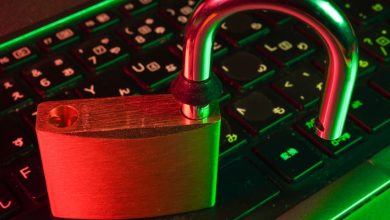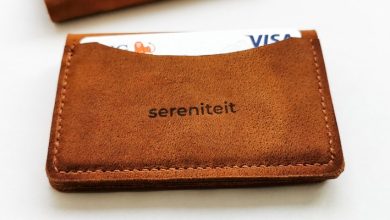A Beginner’s Guide to Using Hardware Wallets Safely

- A Brief Introduction to Hardware Wallets
- Why Hardware Wallets are Essential for Keeping Your Cryptocurrency Safe
- Understanding the Basics of Setting Up a Hardware Wallet
- Tips for Securing Your Hardware Wallet and Private Keys
- How to Safely Make Transactions Using Your Hardware Wallet
- Common Mistakes to Avoid When Using a Hardware Wallet
A Brief Introduction to Hardware Wallets
When it comes to securing your cryptocurrency assets, hardware wallets are an essential tool. These physical devices store your private keys offline, making them less vulnerable to hacking and other cyber threats compared to online or software wallets.
Hardware wallets come in various shapes and sizes, but they all serve the same purpose – to keep your digital assets safe and secure. They are often referred to as cold wallets, as they are not connected to the internet, providing an extra layer of protection against potential attacks.
One of the key benefits of using a hardware wallet is that it allows you to securely manage your cryptocurrency holdings without exposing your private keys to potentially compromised devices. This reduces the risk of unauthorized access and theft of your funds.
Hardware wallets are designed to be user-friendly, making them suitable for both beginners and experienced cryptocurrency users. Setting up a hardware wallet typically involves creating a PIN code and writing down a recovery seed phrase, which can be used to restore access to your funds if the device is lost or damaged.
Why Hardware Wallets are Essential for Keeping Your Cryptocurrency Safe
Hardware wallets are a crucial tool in the world of cryptocurrency for keeping your digital assets secure. These physical devices provide an extra layer of protection by storing your private keys offline, away from potential cyber threats. By keeping your keys offline, hardware wallets protect you from hacking attempts and unauthorized access to your funds.
Using a hardware wallet also adds convenience to your cryptocurrency management. With a hardware wallet, you can securely store a wide range of cryptocurrencies in one place, making it easier to manage your portfolio. Additionally, hardware wallets are designed to be user-friendly, making them accessible for beginners and experienced users alike.
Another benefit of hardware wallets is their durability. These devices are built to withstand physical damage and tampering, ensuring that your private keys remain safe and secure. Whether you’re storing a small amount of cryptocurrency or a large investment, a hardware wallet provides peace of mind knowing that your funds are protected.
In conclusion, hardware wallets are an essential tool for anyone looking to keep their cryptocurrency safe and secure. By storing your private keys offline, these devices protect you from cyber threats and provide added convenience in managing your digital assets. With their durability and user-friendly design, hardware wallets offer a reliable solution for safeguarding your cryptocurrency investments.
Understanding the Basics of Setting Up a Hardware Wallet
Setting up a hardware wallet is essential for securely storing your cryptocurrency. It provides an extra layer of protection by keeping your private keys offline, away from potential hackers. To begin, you’ll need to follow a few simple steps to get your hardware wallet up and running.
First, you’ll need to unbox your hardware wallet and connect it to your computer using a USB cable. Next, you’ll need to follow the instructions provided by the manufacturer to set up your device. This typically involves creating a PIN code and writing down your recovery phrase, which is a series of words that can be used to recover your funds if your wallet is lost or stolen.
Once your hardware wallet is set up, you can start transferring your cryptocurrency to it. Simply connect your wallet to a compatible software application or website, and follow the instructions to send your funds to your hardware wallet. Remember to double-check the recipient address before confirming the transaction to ensure that your funds are going to the right place.
Overall, setting up a hardware wallet is a straightforward process that can provide you with added peace of mind when it comes to storing your cryptocurrency securely. By following these basic steps, you can ensure that your funds are safe from potential threats and enjoy greater security in managing your digital assets.
Tips for Securing Your Hardware Wallet and Private Keys
When it comes to securing your hardware wallet and private keys, there are several tips you can follow to ensure the safety of your cryptocurrency assets. Here are some key measures to consider:
- Always keep your hardware wallet in a safe and secure location, away from potential threats such as theft or damage.
- Make sure to set up a strong and unique PIN code for your hardware wallet to prevent unauthorized access.
- Regularly update the firmware of your hardware wallet to benefit from the latest security features and patches.
- Enable two-factor authentication whenever possible to add an extra layer of security to your account.
- Backup your recovery seed phrase in a secure location separate from your hardware wallet to prevent loss in case of theft or damage.
By following these tips, you can significantly enhance the security of your hardware wallet and private keys, providing you with peace of mind when managing your cryptocurrency investments.
How to Safely Make Transactions Using Your Hardware Wallet
When making transactions using your hardware wallet, it is crucial to follow certain safety measures to protect your assets. Here are some tips to help you safely make transactions using your hardware wallet:
- Ensure that your hardware wallet is genuine and purchased from a reputable source. Counterfeit hardware wallets may compromise the security of your transactions.
- Always double-check the recipient’s address before confirming the transaction. Any errors in the address could result in the loss of your assets.
- Keep your recovery seed phrase in a secure location, separate from your hardware wallet. This will help you recover your funds in case your wallet is lost or stolen.
- Avoid using public Wi-Fi networks when accessing your hardware wallet. Use a secure and private internet connection to prevent unauthorized access to your wallet.
- Regularly update the firmware of your hardware wallet to ensure that it has the latest security features and bug fixes.
By following these precautions, you can securely make transactions using your hardware wallet and minimize the risk of potential threats to your assets.
Common Mistakes to Avoid When Using a Hardware Wallet
When using a hardware wallet, there are several common mistakes that you should avoid to ensure the security of your cryptocurrency. One mistake to avoid is entering your recovery seed phrase on a computer or mobile device that may be compromised by malware. This can expose your seed phrase to potential theft. Instead, always enter your seed phrase directly on the hardware wallet device itself to minimize the risk of exposure.
Another mistake to avoid is failing to update your hardware wallet’s firmware regularly. Firmware updates often include important security patches that can protect your cryptocurrency holdings from potential vulnerabilities. By regularly updating your hardware wallet’s firmware, you can ensure that your funds are secure and protected from external threats.
It is also important to avoid using public Wi-Fi networks when accessing your hardware wallet. Public Wi-Fi networks are often unsecured, making them vulnerable to hacking and potential theft of your sensitive information. Instead, only access your hardware wallet on a secure and private network to minimize the risk of unauthorized access to your funds.



